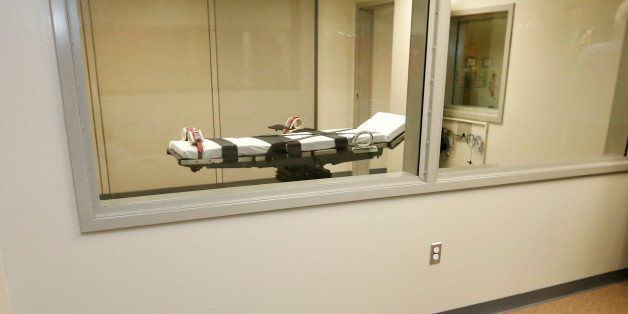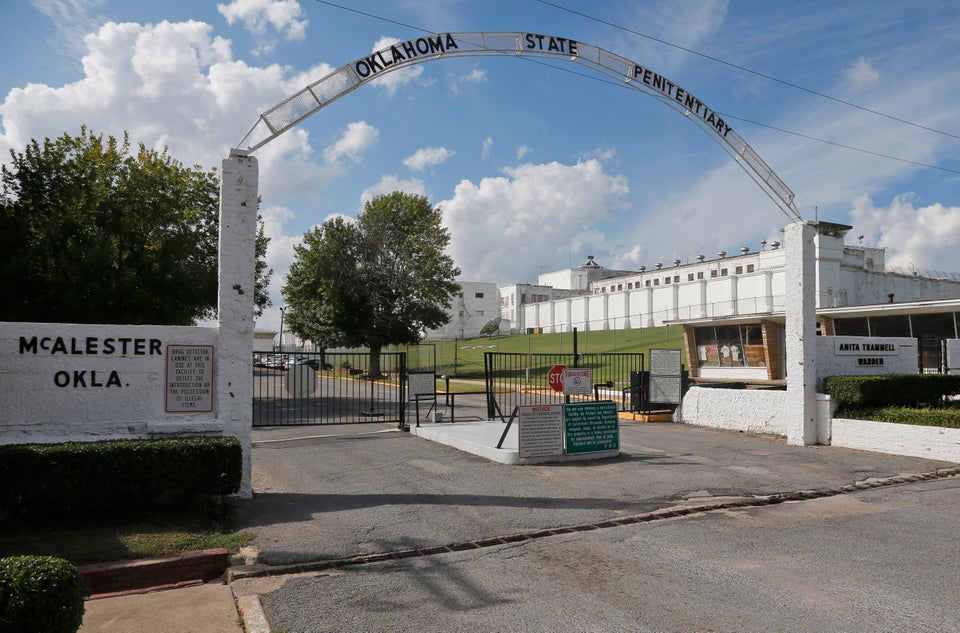
McALESTER, Okla. (AP) — Prison officials unveiled the renovated execution chamber inside the Oklahoma State Penitentiary on Thursday and expressed confidence that the agency would be ready for the state's next scheduled execution in November.
The $71,000 reconstruction of the death chamber and adjacent witness rooms gives executioners more space in which to operate. Department of Corrections also spent about $34,000 on new medical equipment, including $12,500 for a surgical table and $6,000 for an ultrasound machine to help locate veins.
LOOK INSIDE: (Story Continues Below)
New protocols require more training for the execution team and backup procedures in case a lethal injection goes awry.
Prison workers will begin training on the new protocols this week, and the agency will be prepared for the Nov. 13 execution of Charles Warner, who was convicted of raping and killing his roommate's 11-month-old daughter in Oklahoma City in 1997, said prisons spokeswoman Terri Watkins.
"We will be ready," Watkins said.
The renovations and protocol rewrite were ordered by DOC Director Robert Patton after the April 29 execution of Clayton Lockett, who writhed on the gurney, mumbled and tried to lift his head before his execution was eventually called off. Lockett died 43 minutes after the procedure began.
Lockett had been convicted of shooting Stephanie Nieman, 19, with a sawed-off shotgun and watching as two accomplices buried her alive in 1999.
An investigation into Lockett's lethal injection blamed his lengthy execution on the poor placement of a single intravenous line that wasn't monitored throughout the procedure. As a result, some of the lethal drugs were injected into Lockett's tissue instead of directly into his blood stream, the report found.
Based on the recommendations in the report, prison officials renovated the space to give the execution team in an adjacent "chemical room" more space to operate. They also installed new lighting and new audio and video equipment so the condemned inmate can be more closely monitored.
The renovations mean that only five media witnesses will now be able to witness an execution — down from 12 — prompting criticism from open government advocates.
"They took a process already corrupted by secrecy that had already led to at least one botched execution, and managed somehow to make it even more difficult for the people of Oklahoma and their representatives in the media to know anything about that process," said Ryan Kiesel, executive director of the American Civil Liberties Union of Oklahoma.
ACLU Oklahoma, which opposes the death penalty, has sued prison officials who prevented witnesses from watching Lockett die by lowering the blinds during his execution.
Prison officials declined to discuss changes in the drug combinations used to execute inmates, citing pending litigation.
Twenty-one death row inmates are suing Oklahoma seeking to block their executions, arguing that by tinkering with lethal injection chemicals, the state is experimenting on them and violating the U.S. Constitution's ban on cruel and unusual punishment. The federal judge in that case expressed serious concerns earlier this month that the state would be ready to carry out three executions this fall.
___
Follow Sean Murphy at www.twitter.com/apseanmurphy
